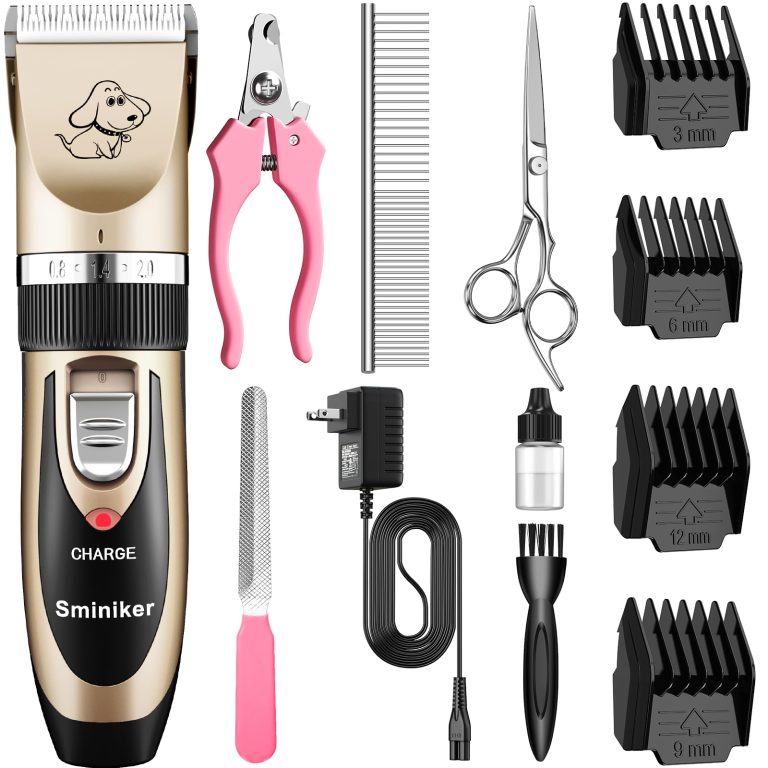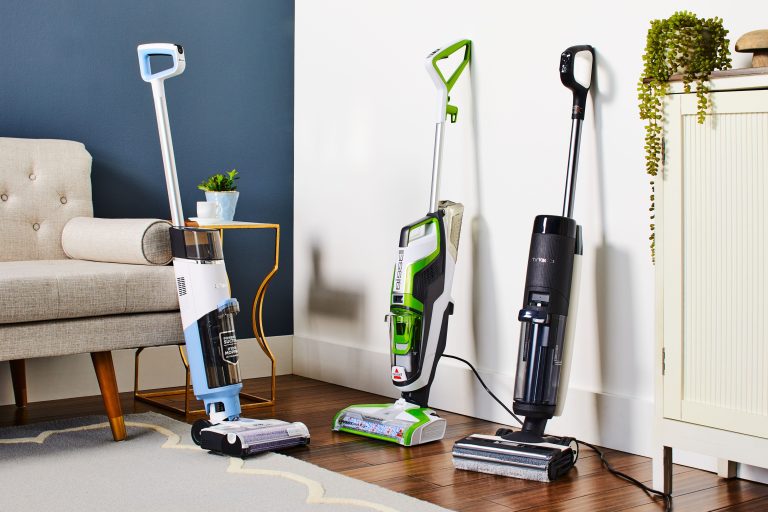9 Best Studio Monitors for Perfect Sound Quality and Performance
When you’re diving into music production or audio mixing, the quality of your studio monitors can make or break your work. Studio monitors are essential for delivering accurate sound, allowing you to hear every detail and nuance in your tracks. Unlike regular speakers, they’re designed to provide a flat frequency response, ensuring that what you hear is a true representation of your mix.
Choosing the right studio monitors can be overwhelming with so many options on the market. Whether you’re a seasoned pro or just starting, finding the perfect set can elevate your projects to new heights. In this article, we’ll explore the 9 best studio monitors that cater to various needs and budgets, helping you make an informed decision for your studio setup.
Key Features to Consider When Choosing Studio Monitors
Understanding the key features of studio monitors helps you make an informed purchase. Let’s break down the essentials to consider.
Frequency Response for Clear Sound
Check the frequency response to ensure clear sound. Monitors with a flat frequency response offer more accurate audio representation, making them ideal for mixing and mastering. Look for monitors that cover a wide frequency range, such as 20 Hz to 20 kHz, to handle both low and high frequencies effectively.
Speaker Size and Power Output
Choose the right speaker size and power output based on your room size and listening levels. Larger woofers (e.g., 8 inches) are better for bass-heavy genres and larger rooms, while smaller ones (e.g., 5 inches) fit well in smaller spaces. Pay attention to the wattage; higher power output (e.g., 100W) ensures better performance at higher volumes without distortion.
Connectivity Options
Evaluate the connectivity options to match your studio setup. Common inputs include XLR, TRS, and RCA. Monitors with multiple input options offer greater flexibility in connecting different audio sources. Ensure compatibility with your audio interface or mixer for seamless integration into your studio system.
The Top 9 Best Studio Monitors
Selecting the right studio monitors is crucial for any serious music production setup. Here are the top 9 studio monitors to consider for precision, clarity, and overall audio performance.
Yamaha HS8: Precision and Clarity
Yamaha HS8 monitors deliver exceptional precision and clarity. They feature an 8-inch cone woofer and a 1-inch dome tweeter for a balanced sound. The iconic white cone design, inherited from the NS-10M, ensures you get an accurate representation of your mix. Equipped with room control and high-trim response controls, they allow fine-tuning according to your acoustics.
KRK Rokit 5 G4: Best for Home Studios
KRK Rokit 5 G4 monitors are tailored for home studios. With their 5-inch woofer and built-in graphic EQ driven by DSP, you can customize the output to your room’s acoustics. The Kevlar drivers provide consistent sound across all frequencies. The lightweight design and versatile connectivity options make them ideal for small studio setups.
Adam Audio A7X: High-End Accuracy
Adam Audio A7X monitors are known for high-end accuracy. They feature a 7-inch woofer complemented by the X-ART tweeter, delivering an extended frequency response up to 50 kHz. The rear panel includes a variety of tuning options, letting you adjust the monitors to match your room’s acoustics. These monitors are perfect for critical listening and professional mixing.
Neumann KH 120: Precision in Compact Form
Neumann KH 120 monitors offer precision in a compact form. Despite their small size, these monitors deliver an outstanding frequency response of 52 Hz to 21 kHz, thanks to the 5.25-inch woofer and titanium fabric dome tweeter. They have extensive acoustic controls, making them suitable for various room configurations. The compact design is perfect for smaller studios.
JBL LSR305: Great Value for Beginners
JBL LSR305 monitors provide great value for beginners. The 5-inch woofer and 1-inch soft-dome tweeter work together with JBL’s Image Control Waveguide for an immersive listening experience. These monitors feature accurate sound reproduction with a broad sweet spot, making them an excellent choice for those starting. The price point makes them accessible without compromising on quality.
Dynaudio LYD 7: Versatility and Control
Dynaudio LYD 7 monitors stand out for their versatility and control. They come with a 7-inch woofer and a 1.1-inch soft-dome tweeter, offering powerful and detailed sound. Featuring Bass Extension, Position, and Sound Balance controls, you can tailor the sound to different listening environments. These monitors are suitable for a wide range of genres and applications.
Genelec 8030C: Superior Detail and Flat Response
Genelec 8030C monitors offer superior detail and a flat response. Their 5-inch woofer and 0.75-inch metal dome tweeter provide precise sound reproduction. The design incorporates Genelec’s Minimum Diffraction Enclosure and Directivity Control Waveguide, enhancing accuracy and minimizing coloration. These monitors are ideal for critical listening and detailed audio work.
Focal Alpha 65: Excellent Dynamics
Focal Alpha 65 monitors are known for excellent dynamics. They feature a 6.5-inch Polyglass woofer and a 1-inch aluminum inverted dome tweeter, delivering a frequency response of 40 Hz to 22 kHz. The dual front-ported design ensures optimal bass performance and minimizes placement issues. They are perfect for monitoring complex audio projects.
Mackie CR3: Budget-Friendly Option
Mackie CR3 monitors are a budget-friendly option. Featuring a 3-inch woofer and 0.75-inch tweeter, they deliver surprisingly good sound for their size. The front-panel volume knob and headphone jack provide convenient control and flexibility. These monitors are a great entry-point for enthusiasts working with limited budgets while still seeking reliable audio performance.
Where to Buy the Best Studio Monitors
Knowing where to purchase your studio monitors can make a huge difference in getting the best deals and customer service. From online retailers to specialized audio stores, you have plenty of options.
Online Retailers and Specialized Audio Stores
Online retailers like Amazon and Sweetwater offer a broad selection of studio monitors. Amazon provides fast shipping, competitive prices, and user reviews to help make an informed decision. Sweetwater stands out with its detailed product descriptions, customer support, and additional perks like free shipping and financing options.
For a more personalized experience, check out specialized audio stores such as Guitar Center and B&H Photo Video. These stores have knowledgeable staff who can guide you based on your specific needs. They often have demo rooms where you can listen to different monitors before making a purchase.
Tips for Shopping Online
When buying studio monitors online, always read customer reviews and check product ratings to gauge reliability. Look for deals during major sales events like Black Friday or Cyber Monday to save money. Ensure the retailer has a good return policy in case the monitors don’t meet your expectations. Finally, verify that the store is authorized by the manufacturer to avoid counterfeit products.
By leveraging these tips and choosing reputable retailers, you can confidently purchase the best studio monitors for your setup.
How to Set Up Your Studio Monitors for Optimal Sound
Setting up your studio monitors correctly can make a significant difference in your music production.
Positioning for Accurate Sound Reproduction
Place your studio monitors at ear level to ensure accurate sound reproduction. Keep them equidistant from your listening position, forming an equilateral triangle. Angle them inward slightly, aiming directly at your ears. Ensure they’re placed symmetrically within the room. Avoid placing them directly against walls, as this can cause bass buildup and distort sound.
Acoustic Treatment of Your Studio
Invest in acoustic treatment to manage reflections and absorb excessive bass. Use foam panels or bass traps in the corners and on the walls to reduce unwanted echoes and standing waves. Position diffusers on the rear wall to scatter sound evenly, ensuring a more balanced listening environment. This setup helps reveal a more accurate mix.
Maintaining Your Studio Monitors
Proper maintenance is essential to ensure longevity and optimal performance of your studio monitors. Follow these tips to keep them in top condition.
Regular Cleaning and Dusting
Cleaning your studio monitors regularly helps maintain audio clarity and prevents dust buildup. Use a microfiber cloth to wipe down the exterior surfaces. For hard-to-reach areas, use a soft brush or compressed air. Avoid using harsh chemicals or abrasive materials that might damage the finish. By keeping your studio monitors clean, you ensure consistent sound quality and prolong their lifespan.
Avoiding Overheating and Humidity Issues
Keeping studio monitors in a well-ventilated area prevents overheating. Leave enough space around them for proper airflow. Overheating can damage internal components, affecting performance. Additionally, store your monitors in an environment with stable humidity levels. Excessive moisture can cause rust and electrical issues. Use a dehumidifier if your space is prone to high humidity. By managing temperature and humidity, you help preserve the integrity of your studio monitors.
Reviewing the Success Stories: How Quality Monitors Transformed Music Production
Testimonials from Professional Producers
Reputable producers often highlight how superior monitors radically improve their work. Grammy-winning producer Rick Rubin once praised Yamaha NS-10s, calling them his “go-to for accurate mixing.” Legendary mixes by Quincy Jones on JBL monitors set industry standards for clarity and depth. These pros emphasize that high-quality monitors allow precise adjustments, ensuring final mixes sound perfect on any system. CLA (Chris Lord-Alge) swears by KRK Rokit monitors, stating they offer “unmatched bass response and crisp highs,” critical for his rock and pop productions.
Case Studies of Home Studio Setups
A home setup featuring KRK Rokit 5 monitors enabled an indie artist to self-produce award-winning albums. Positioning them in an equilateral triangle transformed the small room’s sound quality, providing clear, balanced audio. Another case involves Yamaha HS8 monitors turning a bedroom into a professional-grade studio. Strategic soundproofing and careful monitor placement helped the producer achieve clean, rich mixes. Proper investment in quality monitors can turn any space, regardless of size, into a high-functioning production environment, proving that the right equipment makes all the difference.
Conclusion
Choosing the right studio monitors can dramatically elevate your music production quality. By considering factors like frequency response and speaker size, you can find the perfect fit for your needs. Shopping online from reputable retailers and reading reviews ensures you get the best deal and quality.
Proper setup and maintenance are crucial for optimal performance. Positioning your monitors correctly and using acoustic treatments will enhance sound accuracy. Regular cleaning and controlling environmental factors will keep your equipment in top shape.
High-quality monitors are indispensable tools for professionals and hobbyists alike. With the right setup, you can transform any space into a high-functioning studio, achieving the precise sound needed for perfect mixes.






